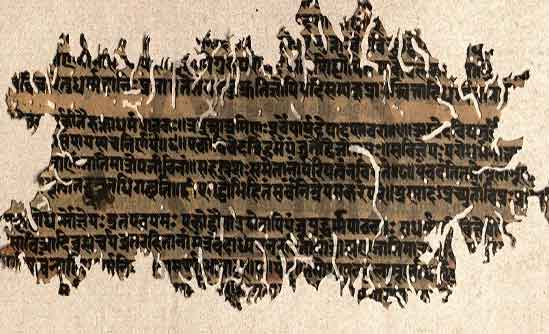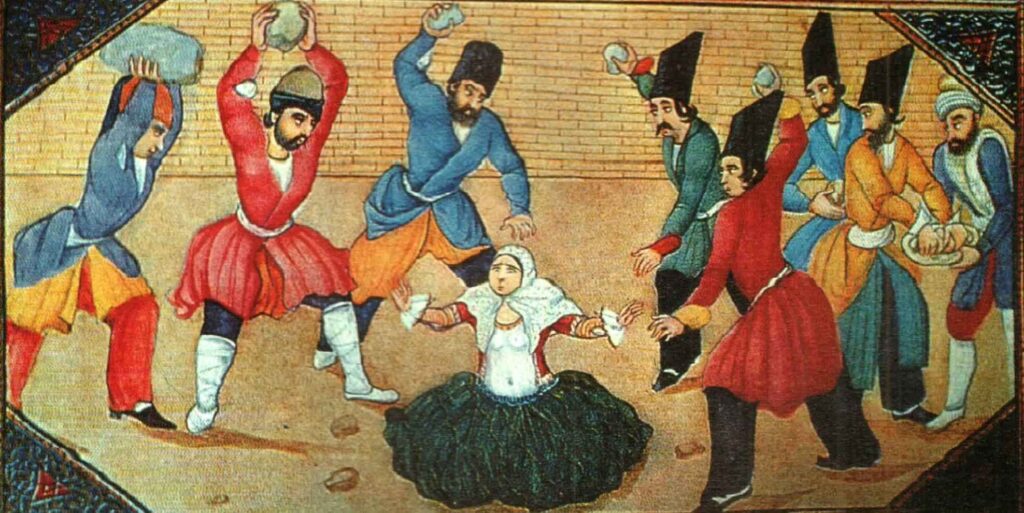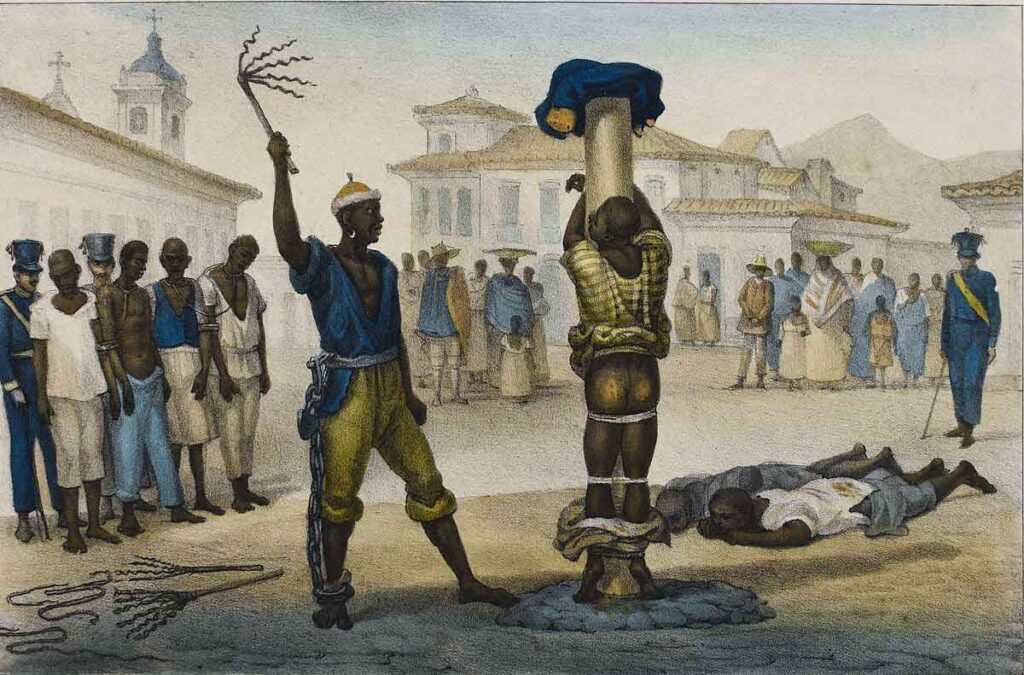Table of Contents
Introduction
Man has passed from the stages of being uncivilized to becoming a social being. There are many factors responsible for promoting man for this change, one of which is common fear and reciprocity. Over time, man has become more and more social which resulted in the increase of moral restraints on his interaction with the society. Whenever a man acted in an unrestrained or unsocial manner, he came in conflict with others and in order to do away with such conflicts many rules and regulations enforcing various kinds of punishments came into being.
Earlier when there was no criminal law to govern the society, people were under a constant threat of being attacked at any time by one another. The weak, the young and the old were easily dominated and overpowered by the strong and the powerful. However as time advanced, societies became more integrated and various norms came into practice, whose violation resulted in punishments and penalties such as: compensation, death penalty, banishment, mutilation etc. With the rise of the humanitarian aspect in penal philosophy fines, forfeiture, confiscation of property and imprisonment to life became common forms of punishment meted out for almost all offences in many parts of the world.
Historical Perspective Of The Punishment System

“Punishment governs all mankind; punishment alone preserves them; punishment wakes while their guards are asleep; the wise considers punishment as the perfection of justice”
Proverb by Manu
From the earliest times, punishment of offenders was a private matter. Punishment was basically based upon the principle of Lex Talionis. It is a principle that states that the victim or a member of the victim’s family retaliates against the offending party as a remedy for personal wrongs, i.e. an eye for an eye. In many instances, personal revenge was not only a right but also a responsibility. Every tribe, family and kin in every kind of society were obligated to avenge the harm caused to them and their family.
The Sumerian code and the code of Hammurabi are the earliest written criminal codes. These codes carry the harsh translation of ‘lex talionis’ but further specify the concept of ‘equality on revenge’, meaning that the severity of retaliation must be equal to the severity of offence or amount of retaliation must fit the crime.
Mythological Perspective Of Punishment
It is believed in many religions that an individual’s ultimate punishment is being sent to hell by God who is the highest authority that upholds justice. Hell is considered to be a place which exists after the life of a person, corresponding to the sins committed during his/her life. In Plato’s ‘Myth of Er’ and Dante’s ‘Divine Comedy’ it is said that in hell, damned souls suffer for each of the sins that they committed. In many religious cultures including Christianity and Islam, hell is traditionally depicted as a fiery and painful place where souls are punished.
In hinduism, Garuda Purana is considered to be a set of instructions given by lord Vishnu to his carrier, Garuda (king of birds). This version of Garuda Purana that survives into the modern era was written somewhere between 800 to 1000 CE. It deals with law, astronomy, medicine, grammar, gemstones, etc. It is a medium sized Purana composed in Sanskrit containing 19000 shlokas. It is also known as Vaishnava Purana. In this Purana, different offences were defined and their respective punishments prescribed. The punishments were very brutal, barbaric and not fit for a civilized society. Some of them are mentioned below:
|
Garuda Purana |
Wrongdoing |
Punishment Given |
|
Kumbhipakam |
Destroying innocent lives for food. |
Roasted in hot oil tanks by Yama-kinkaras. |
|
Thamisra |
Stealing others property including wife, children and belongings. |
Thrashing by a mace. |
|
Agnikunda |
Snatching other’s property by force, gaining undue advantage and unlawfully making the best out of everything in the world. |
Roasting in agnikunda in an inverted position with hands and legs tied from behind on a stick. |
|
Krimibhojanam |
Using people for selfish means, benefiting from other’s work. |
Insects are left intruding the body which they take as their food |
|
Sanmali |
Unchaste relationship by Kamukas. |
Thrashing by a mace. |
Indian Jurisprudence Under Hindu Kings
Under Ancient Hindu kings, there was an administration of civil and criminal justice which was done according to the rules of the Dharma Shastras. In ancient Hindu law, laws were discussed under 18 heads covering both modern civil and criminal branches of law which fell under heads such as gifts, sales, partition, bailment, non payment of debt, breaches of contract, disputes between partners, assault, defamation, trespass of cattle, damage to goods and bodily injury in general.
A Hindu code was compiled by the Pandits of Banaras at the instance of Warren Hastings when he was governor general of India. It was known as the Gentoo code which was printed by the East India company in 1776 in London. It provided that the penalty for theft be divided into open theft and concealed theft and different punishments were prescribed for them according to Roman Law. The former was punished by fine and the latter by the cruellest form of punishment of cutting off the hand or foot, at the discretion of the judge. Death punishment was also given for crimes like housebreaking and highways robbery.
Unequal And Discriminatory Punishment System In Ancient India
During the ancient Indian period there was a clear distinction made between the people of higher and lower castes while imposing punishments. Kautilya’s Arthashastra prescribed lower punishment to higher caste offenders and more severe punishment to lower caste offenders. According to him, a brahmin is not to be tortured like other people even though he may have committed an offence; they were also exempted from death penalty.
For example: A Kshatriya who commits adultery with a woman would be punished with the highest punishment, while a Vaishya doing the same thing would be deprived of his entire property and a Shudra would be burnt alive.
During that time the powers of the judge were also very limited and kept in check. According to Kautilya a judge or a magistrate, who imposes an unjust fine shall be fined either double the amount or 8 times over the prescribed fine. If he imposes corporal punishment wrongly, he shall himself suffer the same.
Forms Of Punishments Under Hindu Code Of Law
The history of the penal system states that in the past punishments were torturous, cruel and barbaric in nature. The objectives of such punishments were to create deterrence and retribution. Such punishments were classified under the following heads:
1. Capital Punishment
2. Corporal Punishment
3. Social Punishment
4. Financial Punishment
Capital Punishment
Capital punishment is an authorized killing of someone in a legal manner as a punishment for the crime committed, such as a death penalty. In other words it means a government has itself sanctioned a practice where a person is put to death by the state as a punishment for a crime. In Ancient India, capital punishment was a very common practice. It was the most extreme form of punishment and the methods of meting out this punishment varied from time to time. Some of those methods were:

- Stoning : ‘Stoning’ is that method of capital punishment in which a group of people throw stones at a person until he dies. In it, the guilty person is made to stand in a small trench dug in the ground and the people surround him from all sides and throw stones on him until his death. This mode of punishment is still meted out in some of the Islamic countries, especially in Afghanistan, Saudi-Arabia etc.
- Pillory : In ‘Pillory’, the offender was compelled to stand in a public place with his head and hands locked in an iron frame so that he couldn’t move. Then he would be whipped, branded or stoned, or his ears would be nailed to the beams of the pillory. Sometimes, dangerous criminals were nailed to the walls and were then shot or stoned to death. It undoubtedly was a very cruel and brutal form of punishment which was in practice till the 19th century.
- Immurement : In it the offender was constructed into a wall. It was the most cruel, barbaric and the most painful form of execution of a death penalty.
- Execution by elephant : Under this punishment, the offender was thrown under the feet of an intoxicated elephant, to be painfully crushed to death.
Corporal Punishment
Corporal Punishment simply means a form of punishment which is intended to cause physical pain on a person. It is also known as physical punishment. This form of punishment is for the violation of a law which involves infliction of pain on or harm to the body of the offender. The objective behind corporal punishment is not only to punish the offender but also to prevent the repetition of the offence by the offender or by any other person. The following are the corporal punishment which were meted out in ancient times:

- Flogging : It simply means ‘beating or whipping’ someone with a stick or whip as a punishment. It was the most common method of meting out corporal punishment to offenders. In India, it was recognized under the Whipping Act, 1864 which was repealed in 1909 but was finally abolished in 1955. The method of flogging differed from country to country. Some used straps and whips with a single lash while others used short pieces of rubber hose since they leave behind traces of flogging. It was one of the most barbaric and cruel forms of punishment. This method is being used in most of the Middle East countries even today.
- Mutilation : Generally it means ‘to cause severe damage to the body of a person’. In other words it means damaging a person severely, especially by removing a part of the body. This mode of punishment was in practice in ancient India. During that period one or both of the hands of the person were chopped off if the offender committed theft, if he indulged in sex offences, his private parts were cut off, if he told a lie or criticized God his tongue was cut off, and if he was deceitful or untrustworthy his ears were cut off. This system was also in practice in the European countries. But in modern times this method has been completely disregarded because of its barbaric nature.
- Branding : It means ‘searing of flesh with a hot iron’. In this method of punishment, the culprit was branded by hot iron on the forehead with the words describing his offence. This method was commonly used in classical societies. In Roman Penal Law, criminals were branded with appropriate marks on their forehead so that they could’ve been identified and subjected to public ridicule. In India it was in practice during the Moghul rule, which has been completely abolished.
- Pressured by iron rods : In this method of punishment the body of the offender was pressured by two iron rods in a very inhumane and cruel manner where he suffered a lot of pain.
- Imprisonment : The Punishment of imprisonment which is seen today is totally different from the kind of imprisonment which was awarded in the past. Many kingdoms awarded the punishment of imprisonment by shackling the hands and legs of the culprit and throwing them down a dry well or in a small dark room.
Social Punishment
Social punishment is a punishment in which a person is restrained from making any kind of contact with any other person, or is moved to a distant place, breaking all of his social connections. No person can extend any help of any sort and if anyone tries to do that, they are held liable for punishment. Social punishment wasn’t aimed at inflicting any bodily pain, but a psychological one. This form of punishment was divided into two parts :
- Banishment : Banishment means ‘to expel a person’. It is also known as ‘transportation’. In this form of punishment, undesirable criminals were transported to far off places with an aim to isolate them from the society. This type of punishment was also in practice during the British rule in India. It was popularly known as ‘kalapani’. At that time, people deemed as ‘dangerous criminals’ were transported to remote islands. This practice was abolished in 1955 and was replaced with “Imprisonment for life”.
- Social Boycott : Social Boycott means ‘an act of forcing a person to abstain from any kind of contact with other people of the society’. In ancient times, the nyaya panchayat in villages used to give the punishment of social boycott to offenders. Under this punishment, no person of the village was allowed to share any occasion of joy and happiness with the offender. In other words the offender was degraded from his caste and no caste member was allowed to come into contact with him. For example in those times smoking ‘Hukkah’ was considered as one of the means for social gatherings and acceptance by the society. But offenders were not allowed to participate in smoking ‘Hukkah’ with the rest of the people, thereby boycotting them. This was termed as stopping a person’s ‘Hukkah-Pani.’
Financial Punishment
It is also known as imposition of fine. It was the common mode of punishment which was not serious in nature and it was awarded specially for the breach of traffic rules, revenue laws and other minor offences. It also included the payment of compensation to the victims of the crime and also the payment of the costs of prosecution.
Ancient Mohammedan Jurisprudence
The criminal law practiced in northern and southern parts of India was the Mohammedan law, which was introduced by the Moghul conquerors whose power culminated under Akbar in the second half of the sixteenth century. The most authoritative written exposition version of the Mohammedan Jurisprudence in India was the Hidayah, which expresses the views of Aboo Huneefah and his disciples Aboo Yousuf and Imam Mohammed who were regarded by the Sunni sect of the Muslims as the principal commentators on the Quran. The Mohammedan criminal law as stated in the Hidayah presents a curious mixture of great vagueness and extreme technicality. The Mohammedan criminal law was open to all objections. It was occasionally cruel. Thus, for instance, immoral intercourse between a woman and a married man was in all cases punishable by death.
The primary base of the Mohammedan criminal law was the Quran which was believed to be of Divine origin. But the laws of the Quran were found to be inadequate. Only eighty or ninety verses of the Quran talked about general rules which might come before a civil or criminal court of justice. Also under this system, the Sultan himself as a ruler exercised criminal jurisdiction over his subjects and accordingly sentenced the offenders to temporal punishments.
Forms Of Punishments Under Mohammedan Jurisprudence
The Mohammedan Jurisprudence had four broad principles of punishment. They were as follows:
- Qisas or retaliation
- Diyut or blood-money
- Hadd or fixed punishment
- Tazir and Siyasa or discretionary and exemplary punishment
Qisas or Retaliation
The principle of Qisas states, ‘an eye for an eye, life for a life, and a limb for a limb‘. Under this principle, crimes called Jinayat were also included. The qisas crimes were murder, manslaughter and any physical injury to another individual, intentional or unintentional. However the punishment of retaliation was classified under two heads:
- Life Qisas- If the intentional injurious act of the criminal causes the death of the victim, the heirs of the victim may take revenge and ask the judge for Life Qisa (death penalty).
- Limb Qisas- When the intentional injurious act does not cause the death of the victim, but rather the loss of a limb or its proper function, the victim, herself/himself, may take revenge or ask for Diya.
These forms of punishments are stated to be divinely stipulated by God in the Quran as can be seen in the verse,

“O you who believe! Retaliation (Qisas) is prescribed for you in case of murder: the free for the free, the slave for the slave, and the female for the female.”
Diyut or Blood Money
The second form of punishment was called Diyut which meant the fine or compensation for blood in cases of homicide. The amount of Diya received for a murdered person and injury of different parts of the body is determined in Fiqh books; the Islamic jurisprudence compiled in books by different Islamic jurists. The punishment of Qisas in all cases of willful homicide was exchangeable with that of Diyut, if the person having the right of retaliation wished so. He was given an alternate remedy either to take Diyut or Qisas as a form of compensation.
Hadd or Specific Penalty
The third principle of punishment under the Mohammedan law was called Hadd which is defined in the Hidayah, which comprises the specific penalties fixed to promote public justice. Under Hadd the quantity and quality of punishment was fixed for certain offences and this could not be altered or modified. If the offence was proved, the Qadi had no other alternative but to sentence the convict to the prescribed punishment. But Hadd could not be executed if there was any doubt, or legal defects and then the Sultan was directed to administer the law with moderation. The punishment of Hadd also extended to the crimes of adultery, of illicit sexual intercourse between married or unmarried individuals, on false accusations, drinking wine, theft and of highway robbery.
Types of Hadd Punishment Given For Different Crimes
- Whipping is the Hadd punishment for adultery, sapphism, procuring, sexual defamation and drinking alcohol. Maximum amount of Hadd lashes is 100 lashes. Some offences receive 80 lashes and the minimum amount is 75 lashes.
- Amputation form of punishment is given for burglary, rebelling and doing corruption on earth. The perpetrator of rebellion was punished either by maiming of his/her hand and foot, crucifixion for three days, banishment or death.
- Death Penalty is given for crimes such as sodomy, rape and incest. Death penalty is considered as the most cruel and sadistic form of punishment given in those times. There are still many Islamic countries which encourage the practice of death penalties.
- Lapidation or Stoning was the punishment for the offences of Zina, when legally established against a man of sound understanding and mature age, being a Musalman and free, and being married to a woman of the same description.
Tazir and Siyasa
Tazir and Siyasa were the discretionary and exemplary form of punishments, which rested completely on the discretion of the judge. Under Tazir, the punishment could be anything from imprisonment and banishment to public exposure. The Qadi was authorized to exercise discretion according to the nature of the offence, rank and situation of the offender in adjudging him to receive his punishment for the crimes he committed. At the discretion of Qadi, banishment was also allowed. Public exposure with a blackened face was expressly declared to be the punishment to be inflicted upon a false witness in addition to forty lashes.
This general doctrine of discretionary punishment was clearly set forth in the preamble of Mohammedan law which states that “The Mohammedan law vests in the sovereign and his delegates the power of sentencing criminals to suffer discretionary punishment in the following three cases.
- In the cases of offences for which no specific penalty of Hadd or Quisas has been provided by the law.
- For crimes which are within the specific provisions of Hadd and Kisas and the proof of such crimes being committed may not be such as the law requires for a judgment of the specific penalties.
- For repeated heinous crimes in high degree which causes injury to society at large and particularly other offences of this description that require exemplary punishment beyond the prescribed penalties.
Siyasa was also the same as Tazir which was meant to create an example by punishing dangerous criminals habitually committing atrocious crimes, and of whom there could be no hope of reformation.Therefore Tazir and Siyasa might in all cases be inflicted by the ruler upon strong presumption, whether arising from the credible testimony of such incompetent witnesses or from circumstances which raised a presumption of guilt or from any other reasonable cause.
Conclusion
From the above brief survey, it can be said that the punishment system during Ancient India was cruel and barbaric. The laws regarding punishment which existed both in Hindu and Muslim laws promoted harsh punishment following the principles of retaliation (Lex Talionis), deterrence and incapacitation giving less importance to restoration and rehabilitation theories. Also, punishment was discriminatory in the Hindu societies, handing out stringent punishment to lower castes. Most of the laws that existed in ancient times were a result of various religious interpretations ie, for the Hindus it was Manusmriti and Arthashastras and for Muslims it was Sharia and teachings of Mohammad. Due to following, the principles of religious offences were interpreted as evil incarnation, therefore harsh punishment were very common in those days.
There was no regard for human life and human rights, people believed that bodily pain and harm is the only way for rehabilitation. However with the advent of British rule in India, new theories of law came into existence which evolved the definition and forms of punishment. Fines, compensation, confiscation of property became the most common form of punishment. Later on an official criminal code of India was introduced which covered all substantive aspects of criminal law. The code was drafted on the recommendations of the First Law Commission of India established in 1834 under the Charter Act of 1833 under the Chairmanship of Lord Macaulay. This code came into force in British India during the early British Raj period in 1862, known as the India Penal Code. Since then many amendments have been made to it, bringing many significant changes into the theories and forms of punishment.
References
- Bassiouni, C., “Sources of Islamic Law and the Protection of Human Rights in the Islamic Criminal Justice System” and “Quesas Crimes”, both published in The Islamic Criminal Justice System (Rome: Oceana Publications Inc., 1982), pages 24 and 203.
- Ancient Indian Jurisprudence from Manu Institute, Ch. VIII, on Judicature and on Law, private and criminal, w.44.380.
- R K Wilson, An Introduction to the study of Anglo Mohammedan Law P. 16(1894),
- Genesis and Development of Punishment System In Ancient India, Chapter 2, Shodhganga.net
- K.D. Gaur, Textbook on Indian Penal Code, Seventh Edition, Chapter 3. Page149.



